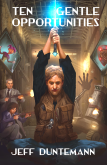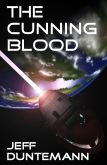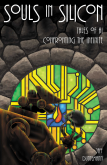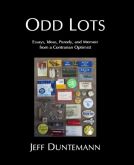Michael Covington posted an item on Facebook some time back citing me for writing about groundedness. The first time I read that, I scratched my head, wondering what writing of mine he was referring to. I understand the nature of being grounded, but I don’t recall writing much about it. I took an hour or so researching the topic online, and found that most people think groundedness means “being fully in the moment.” In most articles it sounded more than a bit New Agey and not at all how I see it operating in myself and in others. So it’s time to do a deeper dive.
From a (substantial) height, I define it this way: Being grounded means knowing yourself, knowing your place in the universe, and acting on that knowledge. All three of these are lifelong challenges. I mean “knowing” in the sense not of having unbreakable axioms, but instead having knowledge that you constantly refine, learning as you go. (More on this below.) Knowing yourself consists of three primary but distinct challenges: Know your strengths. Know your shortcomings. Be skeptical of both—shortcomings can sometimes be remedied– and update your knowledge of both as you learn more about yourself.
Knowing yourself is an emergent process. I knew early in my life that I was good with words. I learned a little later that I was not good at music. Nor sports. I took piano lessons for two years in grade school, and, well, there was a wall I just couldn’t get past. (My mother could hear a song once and play it on our piano. Those genes were not hanging in my closet.) As for sports, I just couldn’t see the point in it, a blind spot that kept me from bothering with it at all. Maybe it was my loss, but it was my choice. I learned by hands-on experience that I was good with electricity and lousy with plumbing. I learned that I was good at building things, from crystal sets to my big telescope that weighs a couple hundred pounds. I loved and understood computing almost instantly, and built my very first machine from loose parts. I found later in life that I was a good editor and also a good public speaker. In honing my skill as a writer, I discovered my peculiar talent of pastiche: writing new material in another writer’s distinctive style. I also found that I could write humor. Not everybody can do that. (Reading a lot of Dave Barry and P. J. O’Rourke helped. I pastiched the hell out of both.)
Knowing your shortcomings is trickier. We’re all tempted to think better of ourselves than our objective nature warrants. My mother tried to teach me ballroom dance. I never got especially good at it, and bottom line, I can waltz and polka and maybe blunder my way through a little more. I was good with math until I hit calculus, which was another wall. Now, not all shortcomings are failures of skill. As a younger man I had a tendency toward anger. Once I internalized the fact that my grandfather had basically killed himself by letting himself become furious too often, I consciously steered around anger, and learned to dissipate it by journaling. James Pennebaker’s books were a big help there—look him up—as was my skill as a writer. I learned to avoid verbal fistfights, whether in person or online. I learned the dangers of tendencies I didn’t have, like envy and tribal psychology, and thus avoided developing them. I strove to be good-natured, generous, and helpful, at least in part by observing others who were anything but. Talking about politics brings out the worst in a lot of people, which is why I almost never talk about politics.
Knowing your place in the universe depends heavily on knowing yourself. I grew up 1,000 feet from Chicago’s city limits. I don’t like sardine-can urban life. I am a suburban man. Genetically, I am a thorough mongrel: Polish, German, Irish, and (maybe) French. (My mother wasn’t sure but she thought so.) My roots grew in four nations and my bark is thick, but my crown is 100% American. I’ve learned a lot reading about the history and culture of my four roots. It was worth the effort; a tree with broad roots is harder to blow down. 23AndMe says I have more Neanderthal genes than 95% of their customers, whatever good that does, but it’s fun to brag about. I had superb and loving parents, who taught me manners, industriousness, faith, honesty, respect for others, and much else.
I don’t have to say that a great deal of my place in the universe is defined by having Carol by my side, as I have now for 56 years. I would not be what I am, were she not what she is. Having a long-time loving relationship with your spouse is a huge part of being grounded.
Becoming grounded is accomplished by respecting your roots, and acting on your knowledge of yourself and where you are intellectually. A huge part of that action consists of not allowing others to take control of you for political or other tribal reasons. I do not follow the crowd. I do not try to fit in. If I resemble a crowd, it’s because there are other people like me in that crowd, not because I’ve changed myself somehow in order to join it.
In short: Know yourself and shape yourself across your life based on that knowledge. Do not allow others to demand that you conform. Do not choose a hill to die on. Choose a hill to live on, and be confident that when you are grounded, dying will not change what you have chosen to be.












